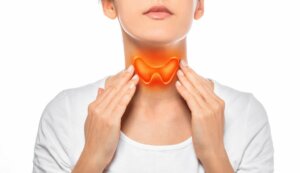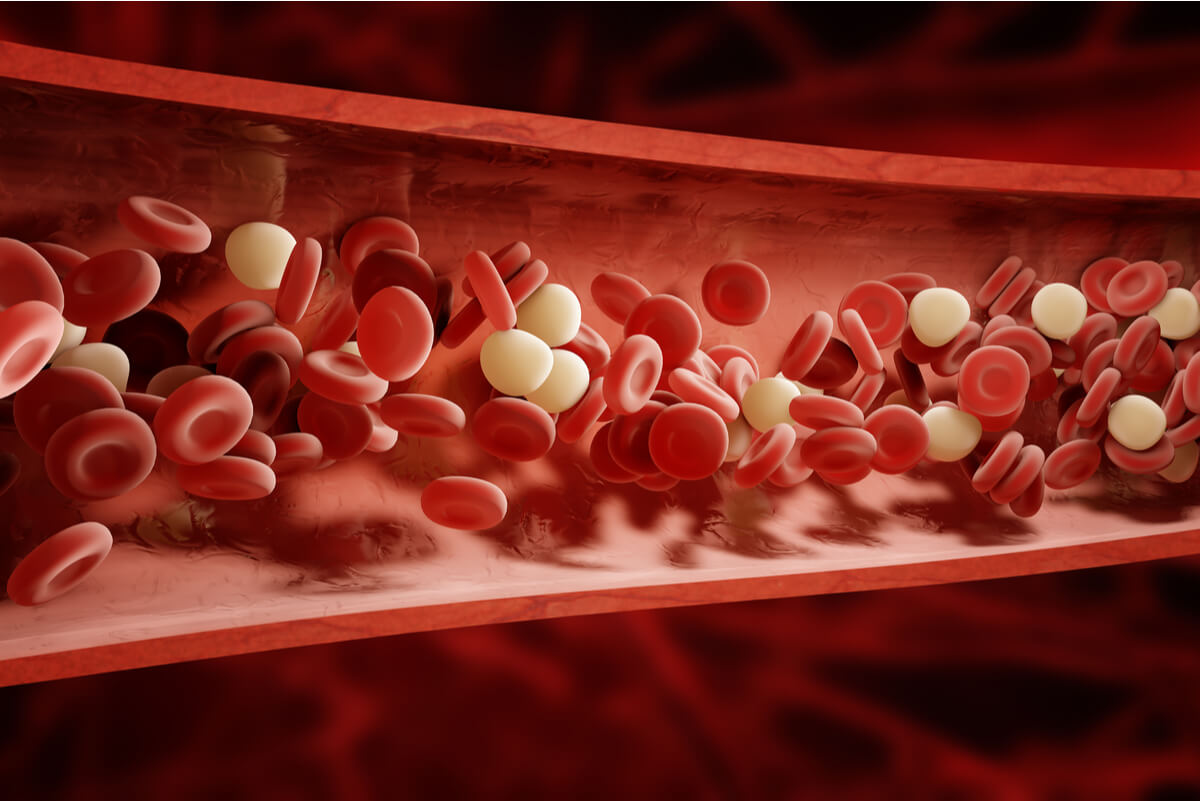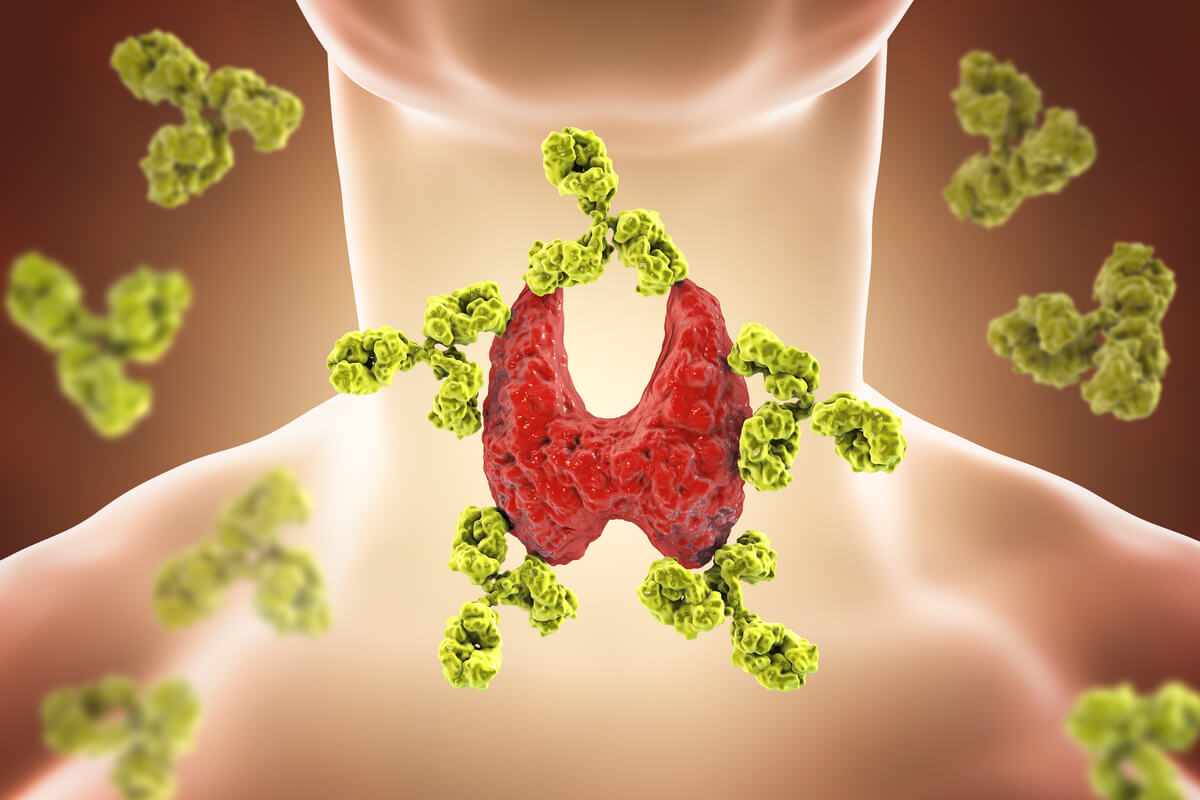How Does the Thyroid Gland Work?

Although it’s an essential part of our body, it isn’t until we’re diagnosed with a thyroid problem that we start to think about how the thyroid gland works. However, it would be a good idea to get to know more about this essential gland.
For this reason, in this article, we’re going to explain all the most important aspects that you would need to take into account, especially if you’re currently seeing a doctor about a thyroid-related problem, or experiencing symptoms.
The thyroid gland is located in the neck area, and, more specifically in the anterior region, or triangle. It’s shaped like a butterfly and fulfills multiple functions in the body, ranging from regulating body temperature to influencing heart rate, appetite, and sleep. In order to perform these functions, it produces thyroid hormones.
As it’s quite impossible to talk about this gland without mentioning its hormones, and its relationship with iodine metabolism, we’ll first tackle this topic.
Thyroid hormones

As the experts from the American Thyroid Association explain, in order to perform each and every one of its functions, the thyroid gland produces thyroid hormones (T1, T2, T3, T4, TSH). These macromolecules then pass into the bloodstream, which carries them to all our body tissues.
Thyroid hormones are essential for human development and health. In children, they’re especially important for their body growth, brain and skeletal development, and in adults, they’re vital for metabolic activity.
They also help the body use energy, maintain body temperature, and contribute to the normal function of the brain, heart, muscles, and other organs. Due to this, if you have a thyroid problem, then you could well experience cardiac or metabolic symptoms, and of many different kinds.
- There are two types of thyroid hormones that are biologically active: thyroxine (T4), which corresponds to 93% of the hormone secreted by the thyroid gland, and triiodothyronine (T3).
- The Spanish Association of Thyroid Cancer tells us that “the numbering 1, 2, 3, 4 is related to the amount of iodine in its composition.”
Iodine metabolism
As the body isn’t able to produce iodine naturally, it must be obtained through foods such as seaweed, fish, dairy products, and iodized salt, as part of a balanced diet. This should be followed according to the body’s needs, taking into account sex, age, and health.
- In order to produce enough thyroxine, adults must consume about 150 micrograms of iodine per day, which would be about 50 grams (2 oz) per year.
- Pregnant women require more iodine. This can be as high as 220 micrograms a day.
- In children, iodine needs vary by age.
- Experts indicate that in both children and adults, when the intake of iodine is lower than what the body needs, then the proportion that’s captured and used in the thyroid increases compared to the amount that’s eliminated in the urine. In contrast, when the intake is higher than the requirements, a greater proportion is eliminated in the urine.
Regulation of the thyroid system
Scientific literature states that “the regulation of thyroid hormone secretion is carried out by negative feedback mediated by T4, which in thyrotropes is transformed into T3 and down-regulates receptors for TRH, which, in turn, reduces its stimulating effect”.
Thyroid disorders

The best-known thyroid disorders are hyper and hypothyroidism. These are malfunctions of the thyroid gland, either because it can’t produce enough thyroid hormone (hypothyroidism) or because it produces too much of it (hyperthyroidism).
Other thyroid disorders include goiter (which is an excessive enlargement of the gland) and thyroid cancer.
Even though all thyroid diseases often affect many different parts of the body, the symptoms will vary.
To cite an example of this, if a person is suffering from hypothyroidism then they may have greater sensitivity or even intolerance to cold, whereas in hyperthyroidism the opposite may occur, that is, a greater sensitivity or intolerance to heat.
Of course, the treatment for each of these thyroid-related condition diseases is different. There’s no single treatment for all conditions caused by thyroid malfunction.
Have you been diagnosed with a thyroid problem? If so, pay attention to the information provided by the doctor, and ask them all the questions you need about the functioning of the thyroid gland and other issues.
Although it’s an essential part of our body, it isn’t until we’re diagnosed with a thyroid problem that we start to think about how the thyroid gland works. However, it would be a good idea to get to know more about this essential gland.
For this reason, in this article, we’re going to explain all the most important aspects that you would need to take into account, especially if you’re currently seeing a doctor about a thyroid-related problem, or experiencing symptoms.
The thyroid gland is located in the neck area, and, more specifically in the anterior region, or triangle. It’s shaped like a butterfly and fulfills multiple functions in the body, ranging from regulating body temperature to influencing heart rate, appetite, and sleep. In order to perform these functions, it produces thyroid hormones.
As it’s quite impossible to talk about this gland without mentioning its hormones, and its relationship with iodine metabolism, we’ll first tackle this topic.
Thyroid hormones

As the experts from the American Thyroid Association explain, in order to perform each and every one of its functions, the thyroid gland produces thyroid hormones (T1, T2, T3, T4, TSH). These macromolecules then pass into the bloodstream, which carries them to all our body tissues.
Thyroid hormones are essential for human development and health. In children, they’re especially important for their body growth, brain and skeletal development, and in adults, they’re vital for metabolic activity.
They also help the body use energy, maintain body temperature, and contribute to the normal function of the brain, heart, muscles, and other organs. Due to this, if you have a thyroid problem, then you could well experience cardiac or metabolic symptoms, and of many different kinds.
- There are two types of thyroid hormones that are biologically active: thyroxine (T4), which corresponds to 93% of the hormone secreted by the thyroid gland, and triiodothyronine (T3).
- The Spanish Association of Thyroid Cancer tells us that “the numbering 1, 2, 3, 4 is related to the amount of iodine in its composition.”
Iodine metabolism
As the body isn’t able to produce iodine naturally, it must be obtained through foods such as seaweed, fish, dairy products, and iodized salt, as part of a balanced diet. This should be followed according to the body’s needs, taking into account sex, age, and health.
- In order to produce enough thyroxine, adults must consume about 150 micrograms of iodine per day, which would be about 50 grams (2 oz) per year.
- Pregnant women require more iodine. This can be as high as 220 micrograms a day.
- In children, iodine needs vary by age.
- Experts indicate that in both children and adults, when the intake of iodine is lower than what the body needs, then the proportion that’s captured and used in the thyroid increases compared to the amount that’s eliminated in the urine. In contrast, when the intake is higher than the requirements, a greater proportion is eliminated in the urine.
Regulation of the thyroid system
Scientific literature states that “the regulation of thyroid hormone secretion is carried out by negative feedback mediated by T4, which in thyrotropes is transformed into T3 and down-regulates receptors for TRH, which, in turn, reduces its stimulating effect”.
Thyroid disorders

The best-known thyroid disorders are hyper and hypothyroidism. These are malfunctions of the thyroid gland, either because it can’t produce enough thyroid hormone (hypothyroidism) or because it produces too much of it (hyperthyroidism).
Other thyroid disorders include goiter (which is an excessive enlargement of the gland) and thyroid cancer.
Even though all thyroid diseases often affect many different parts of the body, the symptoms will vary.
To cite an example of this, if a person is suffering from hypothyroidism then they may have greater sensitivity or even intolerance to cold, whereas in hyperthyroidism the opposite may occur, that is, a greater sensitivity or intolerance to heat.
Of course, the treatment for each of these thyroid-related condition diseases is different. There’s no single treatment for all conditions caused by thyroid malfunction.
Have you been diagnosed with a thyroid problem? If so, pay attention to the information provided by the doctor, and ask them all the questions you need about the functioning of the thyroid gland and other issues.
- Hershman, Jerome M. 2020. “Introducción a La Glándula Tiroidea – Trastornos Hormonales y Metabólicos.” Manual MSD Versión Para Público General. 2020. https://www.msdmanuals.com/es/hogar/trastornos-hormonales-y-metabólicos/trastornos-de-la-glándula-tiroidea/introducción-a-la-glándula-tiroidea.
-
“Función de La Glándula Tiroidea.” n.d. Accessed June 15, 2021. https://www.fairview.org/patient-education/40208.
-
“Las Hormonas Tiroideas: Que Son y Para Qué Sirven – AECAT.” n.d. Accessed June 15, 2021. https://www.aecat.net/2015/07/16/las-hormonas-tiroideas-que-son-y-para-que-sirven/.
Este texto se ofrece únicamente con propósitos informativos y no reemplaza la consulta con un profesional. Ante dudas, consulta a tu especialista.







